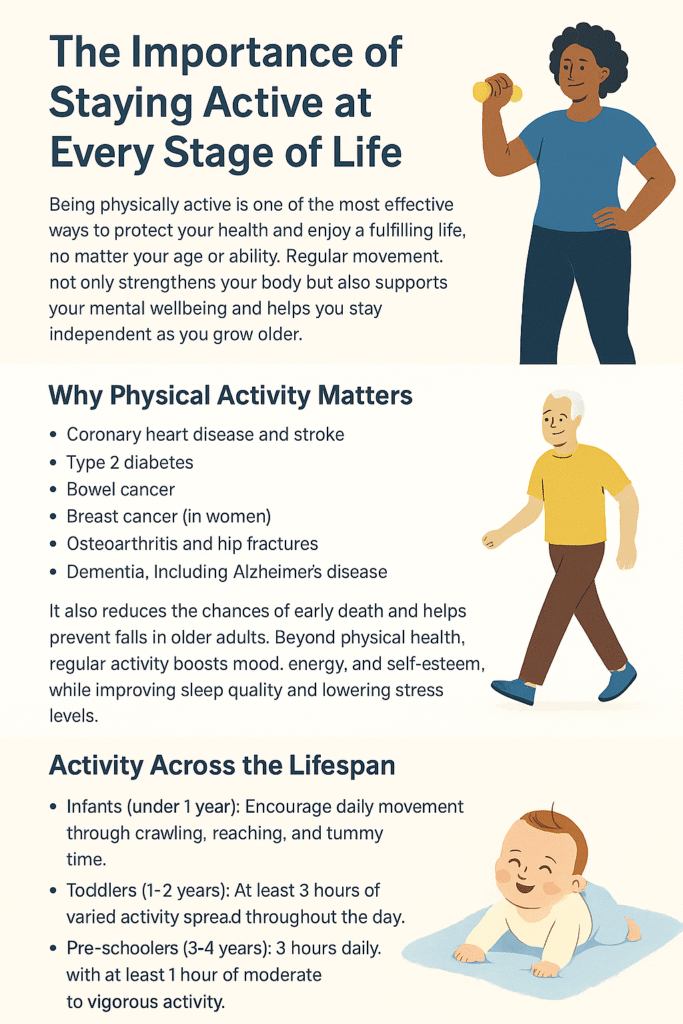PHYSICAL ACTIVITY GUIDELINES
The Importance of Staying Active at Every Stage of Life
Being physically active is one of the most effective ways to protect your health and enjoy a fulfilling life, no matter your age or ability. Regular movement not only strengthens your body but also supports your mental wellbeing and helps you stay independent as you grow older.
Why Physical Activity Matters
Research shows that people who stay active have a much lower risk of developing serious health conditions such as:
Coronary heart disease and stroke
Type 2 diabetes
Bowel cancer
Breast cancer (in women)
Osteoarthritis and hip fractures
Dementia, including Alzheimer’s disease
It also reduces the chances of early death and helps prevent falls in older adults. Beyond physical health, regular activity boosts mood, energy, and self-esteem, while improving sleep quality and lowering stress levels.
Activity Guidelines for Adults (19–64 Years)
For the best results, adults should:
Aim for at least 150 minutes of moderate aerobic activity per week, such as brisk walking, wheeling, or cycling. Alternatively, 75 minutes of vigorous activity like running can be substituted.
Include muscle-strengthening exercises on two or more days each week. These can range from resistance workouts to everyday activities such as heavy gardening or carrying shopping bags.
Break up long periods of sitting with light movement to reduce sedentary time.
Wheelchair users and adults with disabilities benefit equally from these guidelines. While cardiovascular activity may feel more challenging and can place added strain on certain muscles, strengthening exercises are especially important. They can make everyday wheelchair use easier, reduce the risk of overuse injuries, and improve overall independence.
Activity Across the Lifespan
Infants (under 1 year): Encourage daily movement through crawling, reaching, and tummy time.
Toddlers (1–2 years): At least 3 hours of varied activity spread throughout the day.
Pre-schoolers (3–4 years): 3 hours daily, with at least 1 hour of moderate to vigorous activity.
Children and Young People (5–18 years): Around 60 minutes of moderate to vigorous activity each day, including play, sport, and active travel.
Older Adults (65+): At least 150 minutes of moderate activity weekly, plus strength, balance, and flexibility exercises twice a week to reduce the risk of falls.
Pregnancy and Postpartum: Aim for 150 minutes of moderate activity weekly, adapted from pre-pregnancy levels, with gradual return to higher intensity after the postnatal check.
The Takeaway
No matter your age or circumstances, being active every day brings life-changing benefits. Start with activities you enjoy, whether that’s walking, swimming, yoga, or wheelchair-based sports, and build from there. Even small steps towards a more active lifestyle can protect your health, lift your mood, and help you live well into later life.


Post Comment